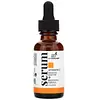What's inside
What's inside
 Key Ingredients
Key Ingredients

 Benefits
Benefits

 Concerns
Concerns

 Ingredients Side-by-side
Ingredients Side-by-side

Water
Skin ConditioningAloe Barbadensis Leaf Juice
Skin ConditioningPropanediol
SolventGluconolactone
Skin ConditioningPolyglyceryl-10 Laurate
Skin ConditioningSodium Hyaluronate
HumectantCitrus Grandis Fruit Extract
AstringentSodium Ascorbyl Phosphate
AntioxidantVaccinium Myrtillus Fruit/Leaf Extract
AstringentSaccharum Officinarum Extract
MoisturisingCitrus Aurantium Dulcis Fruit Extract
MaskingCitrus Limon Fruit Extract
MaskingAcer Saccharum Extract
Skin ConditioningJasminum Officinale Flower Extract
MaskingLilium Candidum Bulb Extract
Skin ConditioningLeontopodium Alpinum Flower Extract
Skin ConditioningGlycyrrhiza Glabra Root Extract
BleachingGlycerin
HumectantHydrolyzed Corn Protein
Skin ConditioningHydrolyzed Wheat Protein
Skin ConditioningHydrolyzed Soy Protein
HumectantSodium Gluconate
Skin ConditioningSodium Stearoyl Glutamate
CleansingHydroxyethylcellulose
Emulsion StabilisingXanthan Gum
EmulsifyingPullulan
Sorbitol
HumectantTrehalose
HumectantAcacia Senegal Gum
MaskingSodium Hydroxide
BufferingSodium Citrate
BufferingCitric Acid
BufferingLeuconostoc/Radish Root Ferment Filtrate
AntimicrobialSodium Benzoate
MaskingPhenoxyethanol
PreservativeParfum
MaskingBenzyl Benzoate
AntimicrobialLimonene
PerfumingWater, Aloe Barbadensis Leaf Juice, Propanediol, Gluconolactone, Polyglyceryl-10 Laurate, Sodium Hyaluronate, Citrus Grandis Fruit Extract, Sodium Ascorbyl Phosphate, Vaccinium Myrtillus Fruit/Leaf Extract, Saccharum Officinarum Extract, Citrus Aurantium Dulcis Fruit Extract, Citrus Limon Fruit Extract, Acer Saccharum Extract, Jasminum Officinale Flower Extract, Lilium Candidum Bulb Extract, Leontopodium Alpinum Flower Extract, Glycyrrhiza Glabra Root Extract, Glycerin, Hydrolyzed Corn Protein, Hydrolyzed Wheat Protein, Hydrolyzed Soy Protein, Sodium Gluconate, Sodium Stearoyl Glutamate, Hydroxyethylcellulose, Xanthan Gum, Pullulan, Sorbitol, Trehalose, Acacia Senegal Gum, Sodium Hydroxide, Sodium Citrate, Citric Acid, Leuconostoc/Radish Root Ferment Filtrate, Sodium Benzoate, Phenoxyethanol, Parfum, Benzyl Benzoate, Limonene
Water
Skin ConditioningAloe Barbadensis Leaf Juice
Skin ConditioningSodium Ascorbyl Phosphate
AntioxidantGlycerin
HumectantPhenoxyethanol
PreservativeBenzoic Acid
MaskingXanthan Gum
EmulsifyingSimmondsia Chinensis Seed Oil
EmollientChondrus Crispus Extract
Skin ConditioningDimethyl Sulfone
SolventSodium Hyaluronate
HumectantTocopheryl Acetate
AntioxidantFerulic Acid
AntimicrobialChamomilla Recutita Flower Extract
Masking
 Reviews
Reviews

Ingredients Explained
These ingredients are found in both products.
Ingredients higher up in an ingredient list are typically present in a larger amount.
Aloe Barbadensis Leaf Juice comes from leaves of the aloe plant. Aloe Barbadensis Leaf Juice is best known for helping to soothe sunburns. It is also anti-inflammatory, moisturizing, antiseptic, and can help heal wounds.
Aloe is packed with good stuff including Vitamins A, C, and E. These vitamins are antioxidants, which help fight free-radicals and the damage they may cause. Free-radicals are molecules that may damage your skin cells, such as pollution.
Aloe Barbadensis Leaf Juice also contains sugars. These sugars come in the form of monosaccharides and polysaccharides, folic acid, and choline. These sugars are able to help bind moisture to skin.
It also contains minerals such as calcium, 12 anthraquinones, fatty acids, amino acids, and Vitamin B12.
Learn more about Aloe Barbadensis Leaf JuiceGlycerin is already naturally found in your skin. It helps moisturize and protect your skin.
A study from 2016 found glycerin to be more effective as a humectant than AHAs and hyaluronic acid.
As a humectant, it helps the skin stay hydrated by pulling moisture to your skin. The low molecular weight of glycerin allows it to pull moisture into the deeper layers of your skin.
Hydrated skin improves your skin barrier; Your skin barrier helps protect against irritants and bacteria.
Glycerin has also been found to have antimicrobial and antiviral properties. Due to these properties, glycerin is often used in wound and burn treatments.
In cosmetics, glycerin is usually derived from plants such as soybean or palm. However, it can also be sourced from animals, such as tallow or animal fat.
This ingredient is organic, colorless, odorless, and non-toxic.
Glycerin is the name for this ingredient in American English. British English uses Glycerol/Glycerine.
Learn more about GlycerinPhenoxyethanol is a preservative that has germicide, antimicrobial, and aromatic properties. Studies show that phenoxyethanol can prevent microbial growth. By itself, it has a scent that is similar to that of a rose.
It's often used in formulations along with Caprylyl Glycol to preserve the shelf life of products.
Sodium Ascorbyl Phosphate is a form of Vitamin C. It is the salt of ascorbic acid.
This ingredient is more gentle than ascorbic acid. It is also more stable when exposed to light and oxygen.
Vitamin C helps reduce redness, improve skin texture, reduce the effects of aging, reduce the visibility of dark spots, and brighten skin.
Your skin uses Vitamin C to produce collagen and collagen production plays a role in having a strong skin barrier and plump skin. As an antioxidant, this ingredient also helps reduce the signs of aging such as fine-lines and wrinkles.
VItamin C helps brighten skin by blocking the process of skin darkening.
In a 2011 study, Sodium Ascorbyl Phosphate was found to have antibacterial properties. This may help treat acne.
Read more about other types of Vitamin C:
Learn more about Sodium Ascorbyl PhosphateSodium Hyaluronate is hyaluronic acid's salt form. It is commonly derived from the sodium salt of hyaluronic acid.
Like hyaluronic acid, it is great at holding water and acts as a humectant. This makes it a great skin hydrating ingredient.
Sodium Hyaluronate is naturally occurring in our bodies and is mostly found in eye fluid and joints.
These are some other common types of Hyaluronic Acid:
Learn more about Sodium HyaluronateWater. It's the most common cosmetic ingredient of all. You'll usually see it at the top of ingredient lists, meaning that it makes up the largest part of the product.
So why is it so popular? Water most often acts as a solvent - this means that it helps dissolve other ingredients into the formulation.
You'll also recognize water as that liquid we all need to stay alive. If you see this, drink a glass of water. Stay hydrated!
Learn more about WaterXanthan gum is used as a stabilizer and thickener within cosmetic products. It helps give products a sticky, thick feeling - preventing them from being too runny.
On the technical side of things, xanthan gum is a polysaccharide - a combination consisting of multiple sugar molecules bonded together.
Xanthan gum is a pretty common and great ingredient. It is a natural, non-toxic, non-irritating ingredient that is also commonly used in food products.
Learn more about Xanthan Gum